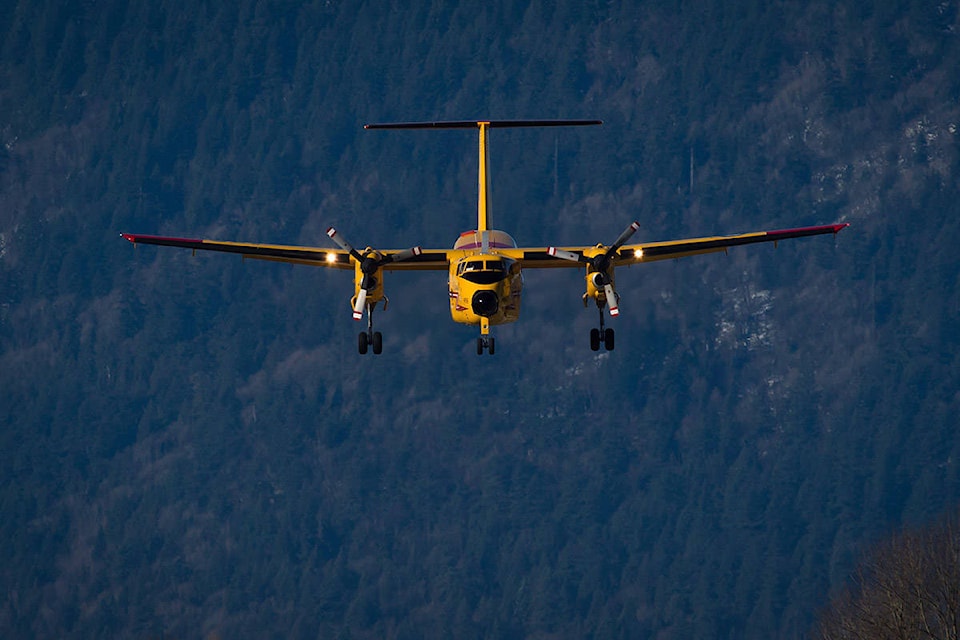The Canadian military has accepted the first of 16 new search-and-rescue planes despite outstanding issues with the aircraft’s manuals.
The new plane was officially handed over by European manufacturer Airbus to the Royal Canadian Air Force in Spain last week.
It was supposed to have delivered on Dec. 1, but that date was pushed back due to disagreements between the company, the Air Force and the Department of National Defence over the contents of the aircrafts’ manuals.
The manuals are thousands of pages thick and provide pilots, aircrew and technicians with necessary instructions and references for safely operating and maintaining the aircraft.
Despite the plane’s successful delivery, Defence Department spokesman Daniel Le Bouthillier says the government is reviewing the manuals with the company to ensure they meet the military’s requirements.
He adds that the plane will remain in Spain until the middle of next year as Air Force members train on the aircraft and test it before flying it to Canadian Forces Base Comox in British Columbia.
“The acceptance of the first aircraft is one of many steps in this complex program to replace the current fixed-wing search and rescue fleets,” Le Bouthillier said in an email.
“We will continue to work with Airbus to ensure the acceptability of remaining work, including revision of technical manuals, completing training for the initial RCAF crews and conducting initial operational testing and evaluation in Spain in the first half of 2020.”
The federal government announced three years ago that it would pay Airbus $2.4-billion for 16 CC-295 aircraft to replace the Air Force’s ancient Buffalo search-and-rescue planes and an old version of the RCAF’s Hercules aircraft.
The deal, which includes an option to pay Airbus another $2.3-billion to maintain and support the plane for 15 years, had been held up as one of the few major successes for Canada’s beleaguered military procurement system in recent years.
In a recent interview with The Canadian Press, Air Force commander Lt.-Gen. Al Meinzinger praised the new aircraft while underscoring the importance of the manuals as “really critical to safely operate the aircraft.”
“We’re working very collaboratively with the company,” he added. “In fact, we’re having regular senior-level discussions. We’re focused on right now reviewing some of the operational manuals — checklists, aircraft operations procedure.”
Meinzinger said the Air Force was also looking at possible contingencies should there be any extended delay in getting the new aircraft back to Canada. He said the Air Force wants the plane in Canada to conduct missions as soon as is safely possible.
Contingencies could include making adjustments with existing aircraft, some of which are already decades old and long overdue for replacement. Search-and-rescue is considered a “no-fail mission” for the military, meaning it must be able to respond no matter the circumstances.
“We’re focused on the front-end and getting the work done,” he said. “But we’re thinking about obviously … if there’s a three-month delay, six-month delay, what might that mean in terms of work we’ve got to start.”
The federal government ordered the military to start conducting search-and-rescue operations in 1947.
The government receives about 10,000 distress calls a year, and while the majority are handled by the provinces or territories, with police and volunteers tasked with responding, the military answers about 750 of the most high-risk calls.
READ MORE: Military facing likely delay in delivery of new search-and-rescue plane
Military search-and-rescue personnel often use specialized airplanes and helicopters to parachute or rappel into remote areas, such as mountains, the high Arctic or one of Canada’s three oceans to respond to plane crashes and sinking ships.
In a statement, Airbus said it had “worked hard with our customer to complete extensive inspections and acceptance flight test towards the delivery of this first” plane and to meet the government’s “demanding delivery milestones.”
Lee Berthiaume, The Canadian Press
Like us on Facebook and follow us on Twitter.
